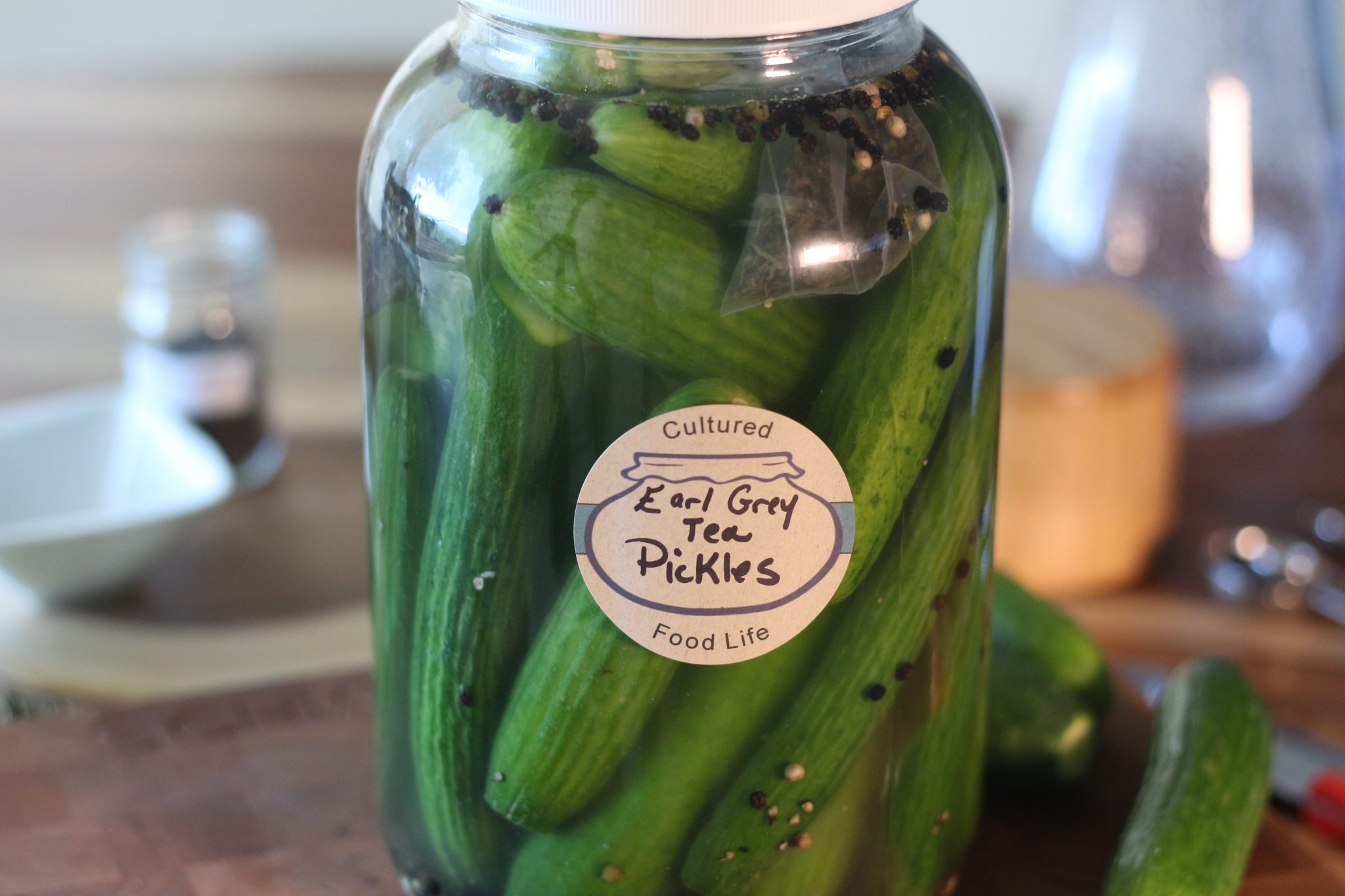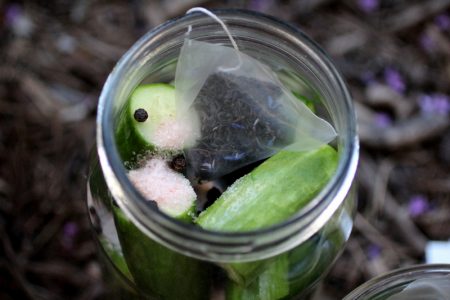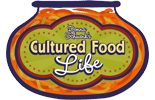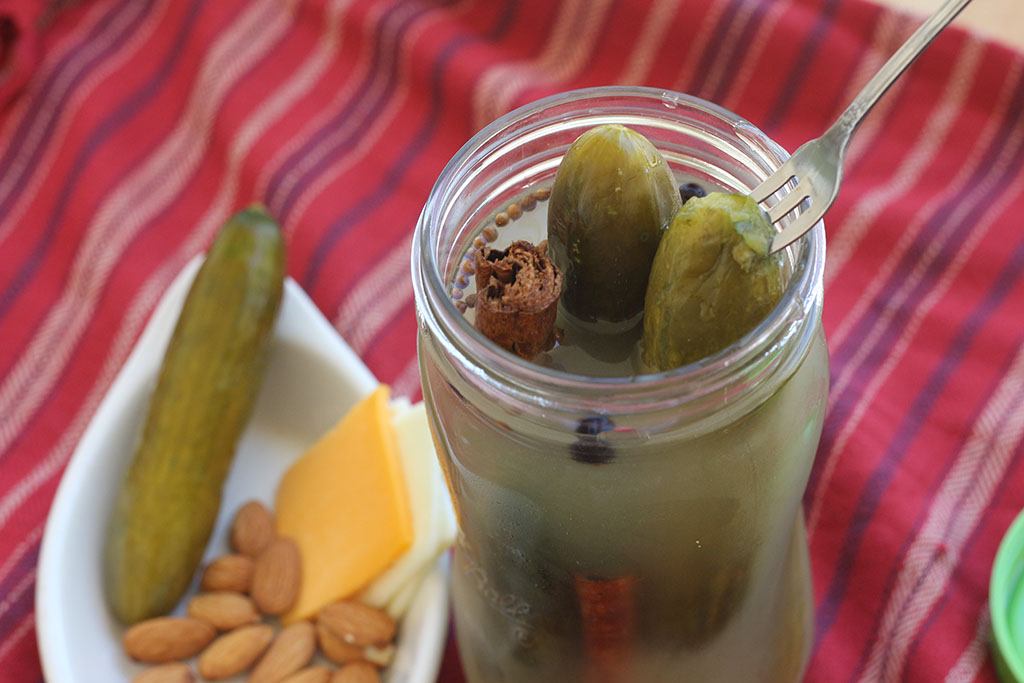
Earl Grey Probiotic Pickles 📹
Fermented pickles are the best pickles. Cultured pickles are super powerful, but so is the brine they are made in. The powerful bacteria in cultured veggies is called Lactobacillus plantarum. It is a powerful weapon against pathogens that try to invade the body. It will steal nutrients from pathogens and they will die, unable to survive while Lactobacillus plantarum is around.
I love finding new ways to make pickles, and using tea bags is my latest discovery. Tea leaves have tannins, and tannins keep your pickles crisp. Tannins are also in leaves such as grape and raspberry and many other types of leaves, but bagged tea is an easier way for me to get the same results and add delicious flavors. I love Earl Grey tea, and I love that slight subtle taste in my pickles. You can use other types of tea too, just make sure it's not herbal as this doesn't contain tannins since it's herbs rather than tea leaves. If you want crunchy pickles, you need to do a couple of things.
How To Make Crunchy Pickles
5 Things For Crunchy Pickles

🥒 Cut off the blossom end of the pickle. The cucumbers can have an enzyme in the blossom that can make the pickles mushy. Just cut off the tip where the cucumber flowered and the enzyme will be removed.
🥒 Always use salt. Salt keeps cultured veggies crisp, and without it, the pickles will be soft and mushy. I like to use a salt that has minerals such as Celtic Sea Salt ,or Himalayan salt. Cultured foods love minerals and so does your body, so make sure you pick a good one loaded with minerals.

🥒Don't over ferment! Pickles ferment for three days on your counter. After the initial three days, I then place them in the fridge. Then after a few more days of them slowly fermenting in the fridge, I eat them. Once the pickles turn olive green they're usually ready. They will last many months in your fridge perfectly preserved in the probiotic brine.
Are you on the list?
Sign up today and I'll send you my free Getting Started Guide!
Each week I'll send you updates, tips, recipes, and more! You might even be a winner of my weekly giveaway! (starter cultures, memberships, and more!)
Come be a part of my cultured food family!





